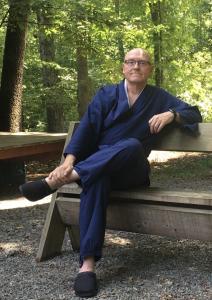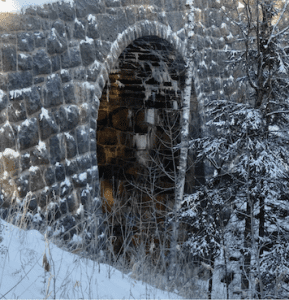Because this Dōgen dharma discourse (hōgo) in Eihei kōroku V8.14 was written for householders, includes examples of awakened householders, and offers instructions for householders, I’ve long been curious about it. After all, 99% or so of those engaged in Zen practice now are householders, yet much of the Zen narrative has monastics as the central figures and the instruction also seems directed to monastics.
So I recently dug into this Dōgen teaching for householders, translating my own version. You’ll find the translation attached in the pdf – here – following these introductory comments.
Click here to support my Zen teaching practice at Patreon of which translations and writings like this are one facet. You will also find an advertisement free version of this post there too.
The Eihei kōroku and this dharma discourse
The hōgo that I’m talking about can be found in Dogen’s Extensive Record (Eihei kōroku), Volume 8, which also includes twenty informal talks Dōgen gave to students in his room and fourteen hōgo that were written out and addressed to various students. So they are intimate instructions. The hōgo in the spotlight in this essay and translation occurs as the fourteenth such dharma discourse in Volume 8.
Leighton and Okumura note this hōgo was probably “… written for Dōgen’s main patron, Hatano Yoshishige (d. 1258), who was an official on a level comparable to ‘ministers and generals.’ Yoshishige, a nobleman with land in Echizen, later provided the land for Dōgen’s monastery, Eiheiji.”
Although a date is not given, it is speculated that it was delivered before 1243 when Dōgen left Kōshōji near present day Kyōto for what became Eiheiji, located deep in the mountains. If, indeed, this hōgo was offered by Dōgen to Hatano and friends before the move to Eiheiji, it serves to highlight the effectiveness of the discourse. It may have contributed to Hatano’s aspiration to save Dōgen from a difficult situation in the big city with a large land grant and funds for a new monastery in the mountains.
Incidentally, this hōgo is one of the longest passages of any kind in Eihei kōroku, coming in at ~1300 words in my translation.
The main themes
In my view, the fact that this hōgo was written out by Dōgen himself (rather than a talk that an attendant listened to and then recorded after-the-fact, as is the case for much of Eihei kōroku) and that the audience to whom it was delivered was his main donor and their friends, adds considerably to the reliability that the message contained in this hōgo is Dōgen’s.
His main themes for householder practice include:
-
the importance of finding a true teacher
-
the dangers of a false teacher
-
the importance of working closely with and serving the teacher
-
taking up a keyword and breaking through
-
then integrating that breakthrough
In making these points, Dōgen seems to have constructed the text carefully and in the form of a spiral. That is, he repeats his themes while systematically moving his instruction progressively forward.
Before translating this hōgo, I had been aware that in Section 5 Dōgen recommends a kōan for householders, saying, “…When you meet a dharma master, first ask for a single kōan case, then you must straightforwardly pay attention, diligently keep it in mind, and practice vigorously.”
A big surprise for me was in how Dōgen amplifies this theme in Section 8, saying, “First, awaken ‘withered tree, dead ash.’ Next, use a bamboo staff and all day long, month after month, knock it all into one.” My translation highlights the method aspect here more clearly than other translators who, as far as I know, have not had first person experience working with kōan with a teacher.
For me, as someone who has been through the Harada-Yasutani kōan shitsunai – and I suspect for anyone who’s done similar work – it is vividly clear that Dōgen is moving from a general recommendation for kōan in Section 5 to a specific keyword (話頭, huàtóu) here, “withered tree, dead ash.” Dōgen then continues by recommending what we now call post-satori training with, “Next, use a bamboo staff and all day long, month after month, knock it all into one.”
In terms of main themes, another surprise is that in this pithy summary of the Zen path for householders, Dōgen says nothing about zazen. He also says nothing about the practice that the Post Meiji Sōtō Orthodoxy claims that he advocated – shikantaza. Doesn’t that seem odd? If you had a chance to give a talk to a group of wealthy and powerful folks who might just be willing to build you a new monastery, wouldn’t you give them the straight scoop about what you thought was most important about the buddhadharma?
Likewise, when Dōgen does give specific instruction for zazen in his several versions of the “Fukanzazengi” (“Universal Recommendations for Zazen”) and “Zazenshin” (“Needle Point of Zazen”) he also does not use the word shikantaza a single time. If you were giving zazen some new spin, wouldn’t you name it in the texts dedicated to zazen?
In these ways and others, this hōgo does not harmonize well with what is said to be Dōgen’s teaching in our times, much of which is poisonous pablum spewed about by well-meaning but poorly-informed Sōtō practitioners and teachers about the heart of Dōgen Zen. One dynamic that might be at play is mistaking Dōgen’s novel, creative style of expression for a novel, creative meaning that runs contrary to the Zen tradition. However, in all of Dōgen’s works, he clearly and repeatedly aligns his message with that of all the buddhas and ancestors.
A pedagogical puzzle
You will find, unsurprisingly for Dōgen, that this hōgo is quite dense, like really rich dark chocolate, but that it also moves straight to the heart of the great matter. Indeed, Dōgen’s shining confidence that householders can plumb the depths of the buddhadharma illuminates the entire discourse – if they’re not lazy, that is.
In Section 4, for example, Dōgen runs through six examples of past householders who practiced diligently and woke up. It reminds me of Torei’s whirlwind tour of his Rinzai lineage in The Inexhaustible Lamp of the Zen School, “Chapter 1: Concerning the Lineage of Our School.” Like Torei, Dōgen’s references are almost in shorthand. It’s like Dōgen and Torei are calling out family stories to those who have heard them many times, “Remember the time Uncle Joe’s canoe tipped over on Lake One?” And everybody chuckles.
If the practitioners Dōgen was addressing could follow this, they were indeed deeply steeped in the Zen narrative. Yet, even a Zen priest I know who I consider to be really steeped could identify only three of the six examples (yours truly identified two of six). It is possible, though, that Hatano and friends had previous training with the Daruma-shu who had a monastery in Echizen, near Hatano’s family holdings. The Daruma-shu preceded Dōgen’s movement in Japan and were already using the Zen narrative in the late 1100’s. However, I’ve seen no evidence that Hatano had such connections.
In my view, it seems very unlikely that in ~1240, Japan, Dōgen’s householder listeners would have much of an inkling of what he was talking about, especially in this example. Which raises the puzzle about Dōgen’s pedagogy: Given that he cites past householders who awakened deeply in the Way with the clear intention of inspiring his householder listeners to undertake Zen training, why did he speak in an abbreviated manner so that they could hardly follow along?
It could be that there was more to the hōgo presentation than we have recorded. For example, Dōgen could have stopped and unpacked the references, going into detail for his listeners – but there is no evidence of this either.
What seems most likely to me is that Dōgen expected his listeners to do the work to meet him where he was at, rather than the contemporary style of the listeners expecting the teacher to do the work to meet them where they’re at. Dōgen seems to choose establishing a correct relationship with householder students over his interest in being fully understood. This fits with Dōgen’s stance within the text. His advice for his householder students is to meet a true teacher and then “…stay close and serve them for three-five years.”
This hōgo and other Dōgen texts
It is notable that Dōgen’s much more well-known Genjokoan (Actualizing the Fundamental Point) was also written for a householder. Another similarity with Genjokoan and this hōgo is that both conclude with a kōan that embodies Dōgen’s meaning and powerfully inspires practice awakening.
However, in the case of Genjokoan, one of Dōgen’s first writings very early in his teaching career, the last words are positive and inspirational: “Since the wind’s nature is ever present, the wind of the Buddha’s family enables us to realize the gold of the great Earth and to transform the long river into cream.”
This hōgo comes after about a decade of teaching. Now we find Dōgen with a stern (and perhaps even crabby) ending, “Who will obtain the understanding of true emptiness and pull the fish from the water if they are lazy again and again?”
There are other differences as well. In Genjokoan, Dōgen demonstrates the clarity and depth of the awakened perspective, but offers little about method. The present hōgo is also steeped in the awakened perspective, of course, but has much to say about method. In that way, it is much more like Dōgen’s Gakudō yōjinshū (“Points to Watch in Buddhist Training”), which was written as a guidebook for monastics.
I encourage you to read through this text slowly, working through the entire hōgo a few times before going back and checking the notes. Read from the belly of the breath body. Allow the breath to be smooth and subtle. Read to read and let understanding come of its own accord, not forcing it to arrive by straining the frontal lobe.
Dōshō Port began practicing Zen in 1977 and now co-teaches with his wife, Tetsugan Zummach Sensei, with the Vine of Obstacles Zen, an online training group. Dōshō received dharma transmission from Dainin Katagiri Rōshi and inka shōmei from James Myōun Ford Rōshi in the Harada-Yasutani lineage. He is also the author ofKeep Me In Your Heart a While: The Haunting Zen of Dainin Katagiri. Dōshō’s translation and commentary on The Record of Empty Hall: One Hundred Classic Koans, was published in 2021 (Shambhala). His third book, Going Through the Mystery’s One Hundred Questions, is now available. Click here to support the teaching practice of Dōshō Rōshi.














